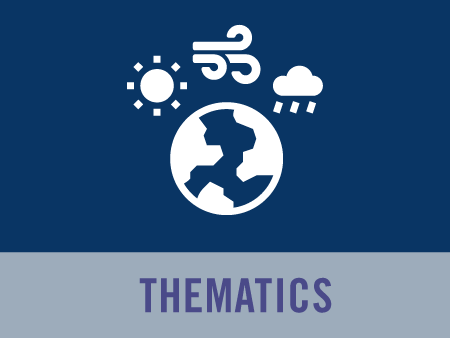Terminology
GlobCurrent project attempts to precisely define the different current terms, as there is no single definition for ocean surface motion, depending also at what spatial and temporal scale we look at.
This topic is discussed extensively in GlobCurrent Technical Note 1. This section defines the names and definitions for the different current terms that you will find in GlobCurrent projects.
Term | Definition | Depth | Estimation method or sensor |
geostrophic_velocity | Geostrophic currents correspond to a particular simplification of the equations governing the horizontal components of velocity. It is valid when the largest terms in the equations of motion reduce to the Coriolis force and the pressure gradient. This can generally apply in the deep ocean over large (> 50-100 km) spatial and long (>2-10 days) temporal scales | Provided generally at 0 or 15 meters | Typically estimated by Altimeters or combination of altimeters and infrared radiometers (SST) through eSQG or MTF methodologies. |
ekman_current_velocity | Ekman currents result from the balance between friction (induced by wind stress) and Coriolis forces. The wind stress is often parametrized as a function of the square of the wind speed and a drag coefficient. Under the assumptions of a steady, homogeneous, horizontal flow on a rotating Earth and an infinitely deep ocean, and considering a constant vertical eddy viscosity, the theoretical Ekman current at the surface flows at 45° to the right (left) of the wind direction in the northern (southern) hemisphere. Below the surface, the Ekman current speed decreases with depth, while the direction changes clockwise (anticlockwise) in the northern (southern) hemisphere. Both effects result in the so-called Ekman spiral. | Provided generally at significant wave height (hs), 0 or 15 meters | Typically estimated by Filtered timeseries (e.g., 20-day bandpass) using multiple platforms (e.g., for ageostrophic current) |
stokes_drift_velocity | As waves travel, the water particles that make up the waves do not travel in a straight line, but rather in orbital motions. Water particles do not move over a closed orbital path but instead have an additional movement in the direction of wave propagation. As the particles progress in an orbital motion, their movement is enhanced at the top of the orbit and slowed slightly at the bottom. The resulting Lagrangian current is called the Stokes drift. | Provided generally at significant wave height (hs) | Typically estimated by wave forecasting models. |
inertial_current_velocity | When wind and wave forces that have set upper ocean motions cease to strongly act, water will not rest immediately. Energy imparted by the wind and waves takes time to fully dissipate. The Coriolis force will then continue to apply as a centripetal force, leading to rotational flows, referred as inertial currents. The period of rotation will vary with the local Coriolis parameter f (e.g. latitude dependent). As friction cannot be completely neglected, inertial oscillations in the real ocean decay in a few days. The amplitude of the inertial motion is proportional to the cumulative wind forcing term and inversely proportional to the water density and thickness of the mixed layer. | Estimated generally above mixed layer depth. | Typically estimated by continuous high resolution drifter position |
internal_wave_related_current_velocity | Internal waves occur at the boundary between water layers of different densities. | Estimated generally at mixed layer depth | Typically estimated by in situ profilers and surface manifestations seen by SAR and visible instruments |
eulerian_total_current_velocity | Total velocity of the current as measured at a fixed point (by means of a currentmeter for instance) | Provided generally at 0m (this is the case for instance for the first GlobCurrent Eulerian current product, sum of geostrophy at 0m and Ekman at 0m), significant wave height (hs), mixed layer depth (mld) or 15 meters. | Typically estimated by combination of infrared (SST) and hyperspectral (ocean colour) imagers, or combination of altimeters with other sources (weather model) |
lagrangian_total_current_velocity | Total velocity of the current as measured along the fluid particle trajectory (by means of a drifting buoy for instance) | at significant wave height (hs) | Typically estimated by in situ drifters |
surface_tracer_velocity | This is the apparent average rate of displacement of a parcel of water (assuming surface properties are conserved). This is not defined as an instantaneous velocity, but an arithmetic average over a given period of time. This velocity should correspond to the total current acting on fully submerged marine debris e.g. oil or person in water, but may not represent floating object with significant wind exposure e.g. liferafts. | Provided generally at 0 meters | Typically estimated by feature motion tracking (MCC, optical flow) from ocean colour or infrared radiometer data. |










